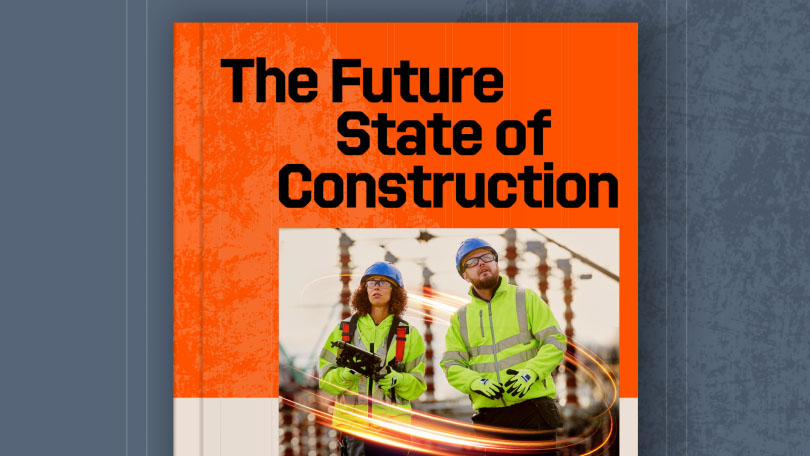— 4 min read
Stakeholder Engagement in Preconstruction: Building Success from Day One

Last Updated Aug 28, 2025

Zoe Mullan
27 articles
Zoe Mullan is an experienced content writer and editor with a background in marketing and communications in the e-learning sector. Zoe holds an MA in English Literature and History from the University of Glasgow and a PGDip in Journalism from the University of Strathclyde and lives in Northern Ireland.
Last Updated Aug 28, 2025

Construction stakeholders include any person, group, or organisation involved in or impacted by a construction project. To deliver successful outcomes, project teams must proactively manage these relationships from the preconstruction phase, well before active building work begins on site. Teams that establish comprehensive stakeholder engagement plans from the outset navigate the entire construction lifecycle more smoothly and efficiently.
Table of contents
Planning Effective Stakeholder Management
Construction projects involve diverse stakeholders across multiple workstreams, including clients, project managers, consultants, and local communities. In commercial fit-out projects, stakeholders also extend to operational teams such as facilities management and IT departments, who will work within the completed building. Therefore, project teams must document formal plans for including all workstreams in project activities and communications.
Effective stakeholder management requires a structured approach:
Create an Organisational Chart
This establishes a clear governance structure. The chart details required decisions and assigns responsibility for each decision, creating a hierarchy that helps teams identify key individuals for specific approvals and decisions.
Document and Communicate the Structure
This formal communication to everyone involved eliminates any ambiguity about decision-making participation that affects ongoing site work and feeds into the project execution plan (PEP).
Conduct Stakeholder Meetings
Meetings with different groups to ensure all parties understand their roles and responsibilities. These meetings typically involve the client's team, local community representatives, consultants, and subcontractors.
Always ensure that you hold a separate session with the client-side project manager so that both parties understand a clear governance for decisions.

Naveed Mehraj MCIOB
Associate Director
Identifying Hidden Stakeholders
Sometimes stakeholders remain invisible until teams hold meetings with client-side representatives. The industry refers to these as 'hidden stakeholders'. Commercial projects, such as office developments, often include catering specialists as hidden stakeholders. Catering teams maintain very specific requirements for prep kitchens, and without clear understanding of their needs, unforeseen issues arise.
When construction teams make assumptions about floor plans or facilities in prep kitchens that don't align with specialist requirements, costly redesigns result. These redesigns consume additional time and money due to delays, typically impacting the programme and potentially resulting in financial penalties.
Managing Competing Stakeholder Priorities
Projects frequently generate competing priorities among stakeholders, as different roles pursue varying objectives. For instance, sustainability consultants and client-side cost teams may clash without clear understanding and negotiation. Each team focuses on its own expectations and objectives, but the overall project manager or client-side lead must determine which decisions take priority.
Ultimately, all decisions return to the governance structure when determining which voices contribute to final outcomes. When stakeholders engage in a 'tug of war', project managers can achieve mutual understanding by providing different options for outcomes. Additionally, explaining the pros and cons of different solutions clearly and simply, while offering hybrid solutions that satisfy all parties through strategic trade-offs, often leads to agreements that consider everyone's ideas.
At the end of the day, it's about making sure we keep everyone happy. And even though it might not seem that they've achieved 100% of their targets or priorities, as long as they've achieved a part of it, I think that makes everyone happy.

Naveed Mehraj MCIOB
Associate Director
Using Technology for Stakeholder Communication
Communicating progress and risks forms a central aspect of stakeholder management. However, the diverse mix of roles and individuals almost always creates wide variations in technical understanding levels.
Visual tools effectively bridge this gap by communicating project status in easily understandable formats:
Progress Versus Programme Tools
Those showing the critical path are particularly important. Teams should highlight activities that run parallel with float buffers and don't affect the end date, as delays to these typically don't create problems.
Critical-Path Focus
This ensures stakeholders understand that delays to these items will change the end date due to knock-on effects throughout the programme.
Bar Charts and Software Tools
This allows teams to demonstrate master programme status and progress percentages simply, making communication much easier than providing technical details about all completed and upcoming work.
Digital Communication Platforms
Platforms, including snagging applications and video tools, further simplify stakeholder engagement.
Previously, we used written notes for snagging, which had to be typed up into long Excel sheets. Now we use apps, where you can mark up exact locations and attach photos, which is much more efficient. This also builds trust with stakeholders and reduces manual error.

Naveed Mehraj MCIOB
Associate Director
Embracing Digital Stakeholders
As the construction industry undergoes significant digital transformation, a new stakeholder type will enter governance structures. Digital teams or digital strategy stakeholders will require invitations to preconstruction project decisions.
Setting digital goals from project inception will become essential, whether for gathering information, operations, maintenance, or capital allowance purposes. These stakeholders will inform strategies for digital information management and communication, as well as digital twins and building information modelling (BIM). Similarly, maintaining centralised models and ensuring information sharing between stakeholders such as consultants and contractors will become increasingly important as digital technology advances in construction processes.
At the moment, for any change, we often rely on huge PDFs or printed documents with lots of pages. Inviting a digital team to become a stakeholder will, in turn, make the rest of stakeholder management simpler thanks to digital models and better information management.

Naveed Mehraj MCIOB
Associate Director
Categories:
Written by

Reviewed by

Zoe Mullan
27 articles
Zoe Mullan is an experienced content writer and editor with a background in marketing and communications in the e-learning sector. Zoe holds an MA in English Literature and History from the University of Glasgow and a PGDip in Journalism from the University of Strathclyde and lives in Northern Ireland.
View profileExplore more helpful resources

Construction Management Contracts: A Complete UK Guide
Managing construction contracts can lead to an extensive physical paper trail. Sharing contracts, getting signatures and managing timelines is difficult when teams and clients are scattered across job sites and...

Key Differences Between Contractors & Subcontractors
In UK commercial construction, main (or principal) contractors engage directly with project owners to deliver complete construction programmes, while subcontractors perform specific scopes of work under the main contractor’s management....

The Role of RFPs in UK Construction Projects
Requests for Proposals (RFPs) are a core document for construction procurement in the United Kingdom. Effective RFPs align expectations, establish clear evaluation criteria, and create accountability between clients and contractors....

Financial Management in Construction Projects
Effective financial management can make or break construction projects. Teams that master budgeting, cash flow and cost control are better positioned to deliver projects on time, within budget and with...
